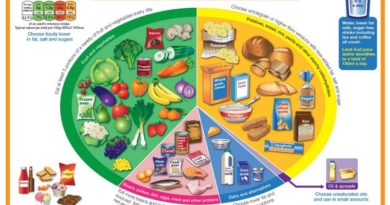The Academy of Medical Royal Colleges obesity initiative – Stephanie Seneff’s submission
Back in April 2012, The Academy of Medical Royal Colleges announced that they were launching a review into the UK “obesity crisis”. The initiative was launched in a front page article in The Observer 15th April 2012. The idea was that the body that represents 220,000 doctors in the UK would seek evidence from any individual or organisation that wished to contribute to the debate.
Four members of The International Network of Cholesterol Skeptics submitted evidence to the steering group. Mine is here.
Björn Hammarskjöld‘s full submission to the steering group is here. (Bjorn’s blog generally is here.)
Barry Groves submitted evidence countersigned by 14 members of thincs. This submission is here.
Below is Stephanie Seneff‘s full submission to the steering group…
We Need a Sea Change to Solve the Obesity Crisis
Stephanie Seneff, Senior Research Scientist, MIT, Cambridge, MA, USA.
1 Introduction
The obesity epidemic will never be solved until we openly admit that we have made a huge mistake in nutritional advice as a consequence of the widely disseminated message to reduce dietary fat and cholesterol. Until we own up to the fact that cholesterol and fat are not the problem, our population will simply grow fatter and fatter.
A minority opinion that is rapidly gaining momentum is that the problem is too many empty carbohydrates, especially sugars, and, most especially, high fructose corn syrup. Dr. Robert H. Lustig, a U.C. San Francisco Professor of Pediatrics, recently produced a youtube video, “Sugar: The Bitter Truth,” which tells the story very clearly, and his recent appearance on the popular 60 Minutes Show, broadcast by CBS, attests to the growing awareness that his message is valid. He tells essentially the same story that we argued for in a recent paper, “Is the metabolic syndrome caused by a high fructose, and relatively low fat, low cholesterol diet?” that was published in the Archives of Medical Science in 2011. The science behind the problem is clear to experts in metabolism, and, ironically, the core problem is a severe deficiency in cholesterol in the membranes of all the cells of the body.
2 The Underlying Science
Sugar enters cells through special channels within confined regions of the cell membrane called “lipid rafts,” which are highly concentrated in cholesterol. With insufficient cholesterol, muscle cells become impaired in their ability to take up sugar, and, as a consequence, sugar piles up in the blood stream, causing glycation damage to blood proteins. Two critical affected proteins are hemoglobin, which delivers oxygen to the tissues, and apoB, which is found in LDL (the so-called “bad” cholesterol). When LDL’s apoB is gummed up with sugar, it interferes with its ability to deliver its goods to the tissues. These goods include fats, cholesterol, fat-soluble vitamins, and antioxidants. So, too much sugar in the blood results in a feedback loop where cholesterol can’t be effectively delivered to the tissues, so they become unable to take up sugar, and the problem snowballs.
When a person eats a meal that contains a substantial amount of highly processed carbohydrates and sugar, along with very little fat, the result is a sharp sugar spike in the blood stream shortly after the meal. Because the foods are so easily digested, and because digestion is not slowed down with the addition of dietary fats, sugar floods the blood just after a meal, and the insulin response overshoots. The beta cells in the pancreas respond by producing a large amount of insulin, to try to eliminate the sugar before it can do damage to blood proteins. Fructose is especially problematic, and it is dealt with by the liver, which rapidly converts it to glycogen and fats. The meal is digested so quickly that, two hours later, when dietary fats should be entering the blood stream, the body is suddenly starved for fuel, and the liver is forced to release more sugar into the blood, from its glycogen stores.
The excess sugar in the blood prevents LDL from delivering cholesterol to muscle cells, and thus they can no longer effectively utilize glucose as a fuel. The solution that the body adopts is to let the muscle cells consume fat instead of sugar. But fat is in short supply because it has been kept out of the diet. So fat cells try to solve both problems – too much sugar in the blood and too little fuel supply to the muscles – by diligently taking up excess sugar and converting it to fat, storing it as a reserve “silo.” However, fat cells can only release fat when insulin levels in the blood are low, because insulin suppresses fat release.
The fats are trapped inside the fat cells because of the excess insulin. The only time the fat cells can release their stores is in the wee hours of the morning, after the excess insulin has finally become exhausted. Fat cells flood the blood stream with triglycerides at this time, in order to provide a buffered supply of fuel to the cholesterol-deficient muscle cells, to tide them over until the next time insulin levels are sufficiently low that fats can be released. So the blood stream contains an excess of sugar, triglycerides, and LDL, all because the diet is too overloaded with empty carbohydrates and excess dietary sugar, and grossly insufficient in cholesterol and fat. High levels of triglycerides, LDL, and sugar in the blood early in the morning, along with obesity, are characteristic features of the metabolic syndrome.
High fructose corn syrup is especially bad. Fructose is ten times as damaging to blood proteins as glucose. Because of this, the liver aggressively processes fructose and converts it into glycogen and fat. In order to ship out the fat it has produced, the liver needs a good supply of cholesterol, because it is cholesterol in the outer membrane of LDL particles that protects the contents from both oxidative and glycation damage. However, cholesterol is completely missing from the diet, due to the aggressive campaigns against it. Cholesterol synthesis is a difficult process involving at least 25 steps, and the liver is unable to synthesize cholesterol because it is distracted by the task of processing fructose. So the liver releases a poor quality LDL, carrying the fat produced by processing fructose, but even more susceptible than usual to damage by exposure to sugars and oxygen in the blood.
3 Solid Evidence from Weston Price’s Research
Every nutritional expert should be required to read the book, Nutrition and Physical Degeneration, by the dentist Weston Price, who travelled the world during the 1930’s, carefully studying the indigenous diets and comparing the physical health of people who still ate traditional diets with the health of those who were eating large amounts of the flour and sugar being newly imported from Western nations. He visited indigenous peoples in northern Canada, in Greenland, in the mountains of Switzerland, and in islands in the South Pacific, and everywhere he went he found the same pattern: people who ate the indigenous diet were healthy; those who were eating lots of imported sugar and flour were not. He provides compelling evidence that foods that are high in cholesterol – seafood, caviar, eggs, organ meats – were consistently highly treasured in all of the traditional cultures he studied. In many cultures, these foods were especially promoted for young women of childbearing age and pregnant women. These are precisely the foods that we are told to avoid today, and this is the key reason why we are unhealthy. The New York Times columnist, Gary Taubes, has tried very hard to convey the message that dietary carbohydrates are the problem, in his book, Good Calories, Bad Calories. And Barry Groves has put forth the same message in his book, Trick and Treat: How “Healthy Eating” is Making us Ill. All three of these books should be required reading for anyone planning a career in nutrition.
4 Which Fats are Healthy?
Beyond the general incorrect concept that “fats are bad for you,” the more specific question of which fats are especially bad is also incorrectly portrayed by health experts and in the media. Dietary fats can be grouped into three major categories: unsaturated, saturated, and trans fats. We agree wholeheartedly with the concept that trans fats should be eliminated from the diet. They are highly damaging to health, mostly because they are shaped like saturated fats, and therefore the body gets fooled, and mistakes them for saturated fats. However, because they are not saturated, they are susceptible to oxidative damage and cause collateral destruction.
The unsaturated fats that are present in cell membranes are protected from oxidative damage by cholesterol. When cholesterol is insufficient, they are more vulnerable to oxidation. Oxidized fats are highly reactive and can cause a cascade reaction with much collateral damage to cell proteins. Because saturated fats lack double bonds (that’s their definition), they cannot be oxidized; this makes them the healthiest fats.
5 Concrete Steps to be Taken
There are several steps that I would recommend to try to combat the obesity epidemic, outlined below
- A high-level government official, preferably the prime minister, should make a public statement on a highly-visible occasion admitting that we were wrong to blame saturated fat and cholesterol in the diet on the obesity epidemic, and that, instead, people should focus on reducing dietary sugars and processed foods.
- The following three books should be required reading for all nutritionists and government personnel involved in the obesity campaign: Good Calories Bad Calories by Gary Taubes, Trick and Treat by Barry Groves, and Nutrition and Physical Degeneration by Weston Price.
- All cakes, cookies, candies, and carbonated beverages should be taxed.
- An aggressive ad campaign should be initiated to promote foods containing saturated fat and cholesterol, such as kidney pie, oysters, eggs, bacon, butter and whole milk.
- High fructose corn syrup and trans fats should be banned from all foods. Carbonated beverages should be banned from public schools.
- Our children should be educated on the benefits of real unprocessed food and the dangers of fast food.
Further Reading
- Gary Taubes, Good Calories Bad Calories. Knopf Publishers, September 25, 2007.
- Barry Groves, Trick and Treat: How “Healthy Eating” is Making us Ill. Hammersmith Press, October 15, 2008.
- Weston Price, Nutrition and Physical Degeneration, 6th Edition, Keats Publishers, June, 2003.
- S. Seneff, G. Wainwright, and L. Mascitelli, “Is the metabolic syndrome caused by a high fructose, and relatively low fat, low cholesterol diet?” Archives of Medical Science, Vol. 7, No. 1, pp. 8-20, 2011; DOI: 10.5114/aoms.2011.20598




Pingback: RANT – The Cellular Season – part five | Just ME in T's Health Stuff
Agree with you Matt. As Barry Groves has written, the ‘extras’ in wholemeal bread prevent absorption of micro-nutrients. The difference in glycemic load between ‘evil’ white bread and ‘good’ wholemeal is insignificant.
I would like to add to the 5 concrete steps- subsidies for animal producers who pasture their stock.
I feel like every time the phrase “processed food” appears, there should be a parenthetical (including whole wheat bread and pasta). Our culture has been indoctrinated to see “whole wheat” as a healthy version of the refined version. Although the nutrients haven’t been stripped out (and so in some sense is “healthier”), overall they still have essentially the same metabolic effect, and I assume people in the general public would read something like this and assume that “processed food” does not include the “healthy whole wheat” counterparts.